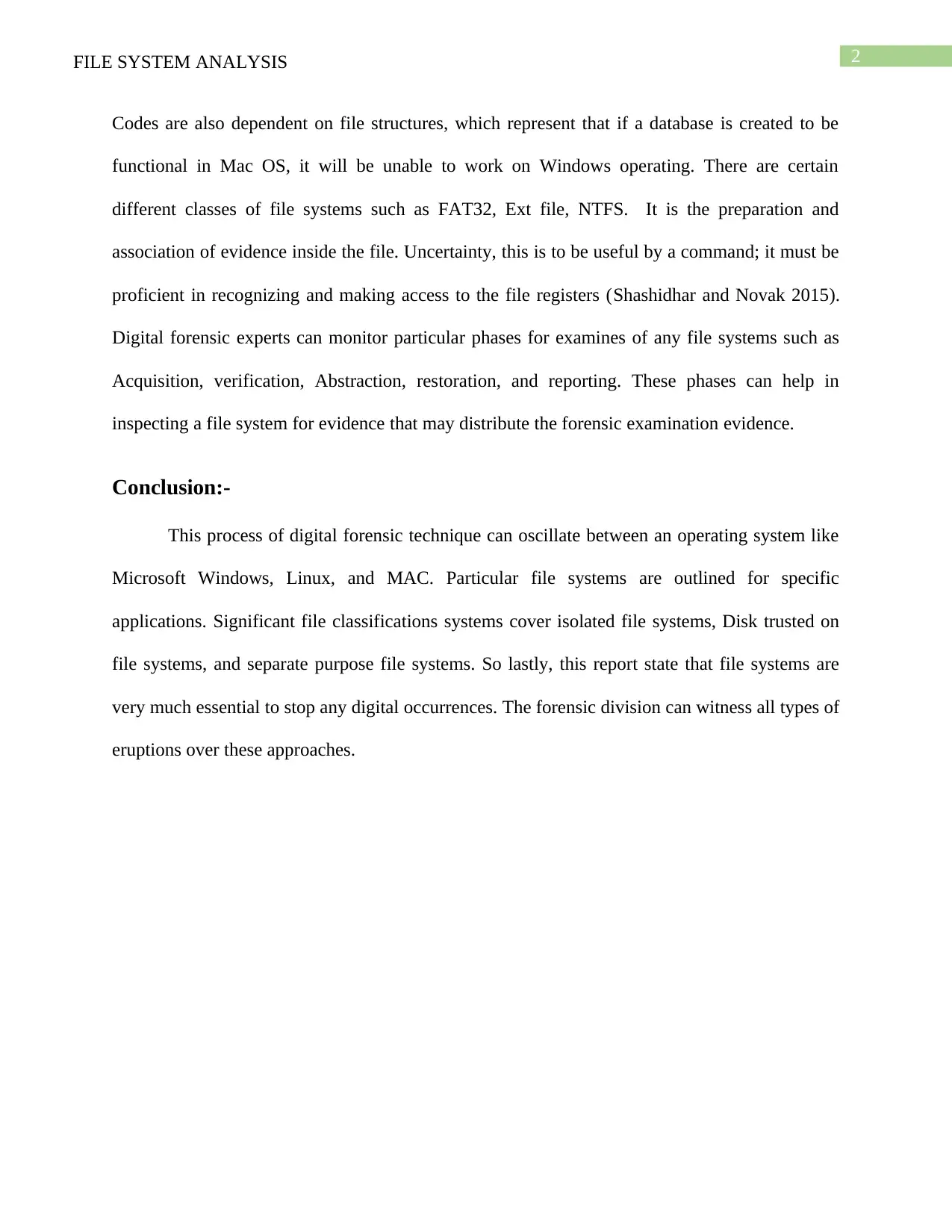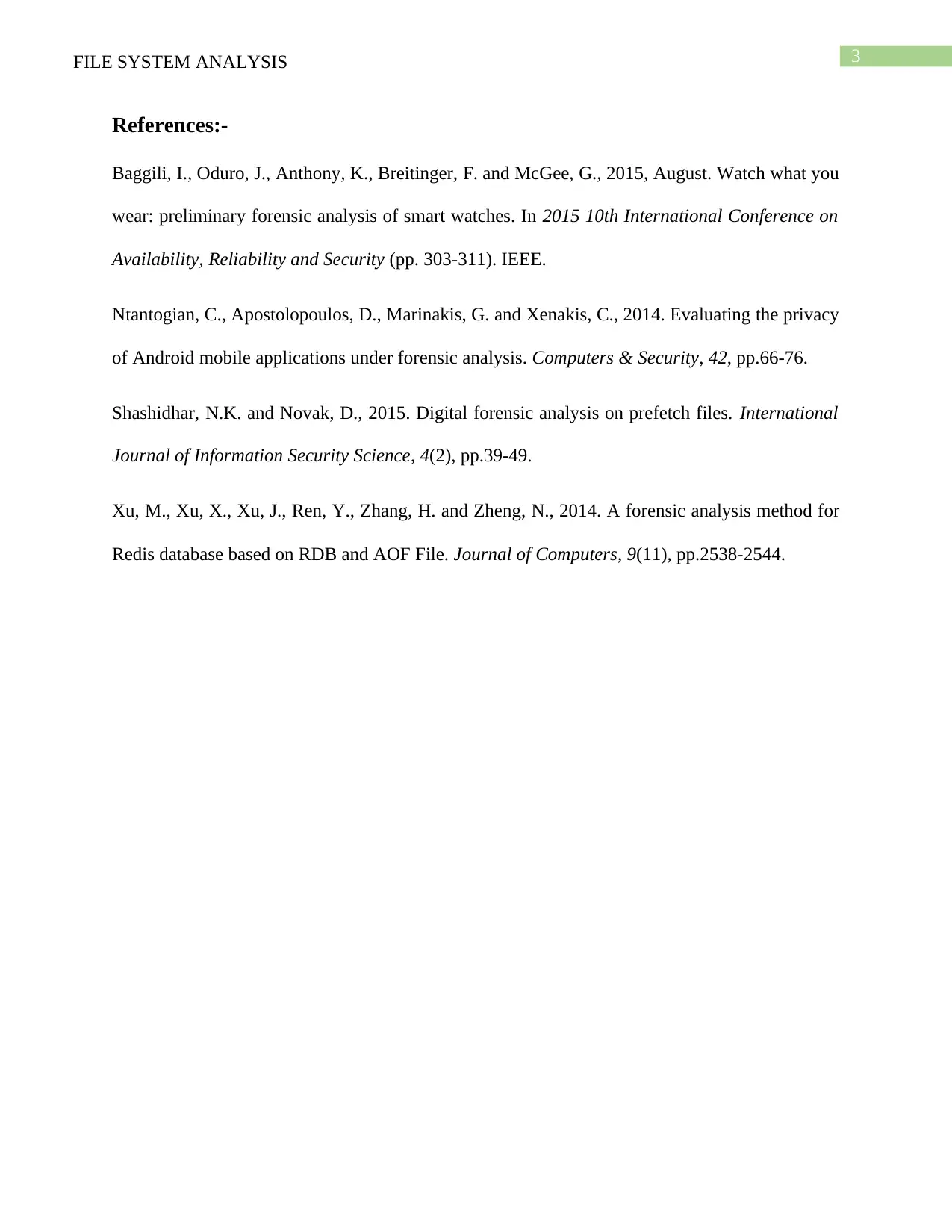University Assignment: Digital Forensics File System Analysis Report
VerifiedAdded on 2022/09/12
|4
|798
|22
Report
AI Summary
This report delves into the critical aspects of file system analysis within the realm of digital forensics. It explores the fundamental concepts, including the structure and procedures of file systems, emphasizing their importance in retaining digital evidence. The report highlights the methodologies used for data acquisition, verification, abstraction, restoration, and reporting, providing a comprehensive overview of how digital forensic experts examine file systems for potential evidence. The analysis covers different types of file systems and the significance of file formats in legal processes. The report concludes by emphasizing the crucial role of file systems in preventing digital occurrences and the forensic division's ability to witness eruptions over these approaches. The report references key publications in the field, such as Baggili et al. (2015), Ntantogian et al. (2014), Shashidhar and Novak (2015), and Xu et al. (2014), to support its findings. The document is a student's work, available on Desklib for further study resources.
1 out of 4










![[object Object]](/_next/static/media/star-bottom.7253800d.svg)